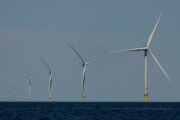Dividend stocks are a staple of every income investor’s portfolio, but don’t dismiss them as a retiree’s investment only. Dividend stocks have a role to play in any portfolio, no matter the investor’s age or financial circumstances. The reason: compounding.
When the dividends these stocks pay are reinvested, an investor’s wealth snowballs. The more dividends you reinvest, the more shares you own, and the more shares you own, the larger your future dividends will be. Dividend reinvestment accounted for 42 percent of the average annual total return of the Standard & Poor’s 500 index since 1930, according to research by Santa Barbara Asset Management.
At the same time, there’s plenty of room for dividend stock investors to go wrong, from choosing companies with unreliable dividends to fixating on the dividend yield alone. What follows is a primer on dividend stocks, starting with the most basic question of all.
What is a dividend? A dividend is a share of a company’s profits distributed to shareholders, and usually paid quarterly, like a bonus to investors.
Dividends are a way for shareholders “to participate and share in the growth of the underlying business,” above and beyond the share price’s appreciation, says Don Taylor, chief investment officer of rising dividends strategies and lead portfolio manager for the Franklin Rising Dividends Fund ( FRDPX) at Franklin Templeton Investments in New York. This sharing of the wealth can come in one of two forms: cash dividends or stock dividends.
In the U.S., most dividends are cash dividends, which are cash payments made on a per-share basis to investors. For instance, if a company pays a dividend of 20 cents per share, an investor with 100 shares would receive $20 in cash. Stock dividends are a percentage increase in the number of shares owned. If an investor owns 100 shares and the company issues a 10 percent stock dividend, that investor will have 110 shares after the dividend.
Dividends are not guaranteed. They’re “at the discretion of the board of directors,” says Scott Davis, senior portfolio manager and head of income strategies at Boston-based Columbia Threadneedle Investments. Unlike a bond which must pay a contracted amount or be in default, the board of directors can decide to reduce the dividend or even eliminate it at any time, he says.
Why do people invest in dividend stocks? Even though dividends aren’t guaranteed, many investors rely on them as a source of income. Because companies pay their dividends at different times, retirees can create a schedule to receive a dividend check each month of the year, says Boston-based Bill McMahon, chief investment officer with ThomasPartners, a Charles Schwab affiliate specializing in dividend investing strategies.
Meanwhile, younger investors — who may not need the income now — can put those dividends to work immediately in their portfolios by reinvesting them. Dividend reinvestment plans automate this process, but even if you reinvest your dividends, they are still taxed the year you receive them. The exceptions are dividends in a tax-advantaged account like an IRA, where the money grows tax-free until it’s withdrawn.
Dividend stocks also often benefit from higher yields than bonds when interest rates are low, while simultaneously offering the potential for share price appreciation. Even if the price falls, the dividend can cushion a portfolio with steady income, and if you reinvest those dividends, a lower share price gets you more shares per dividend.
So investors can benefit from dividend payments, but what’s in it for companies?
Why companies pay dividends. Because dividends are typically a sign of financial health, a company may offer them to attract investors and drive the share price up.
Generally, companies pay dividends when money is left over after covering operating expenses and business reinvestment. That’s why mature companies, which require less capital reinvestment, are more likely to pay a dividend. “As a result, they’ll start to pay a higher and higher dividend to share their profits with their shareholder base,” McMahon says.
Why companies don’t pay dividends. A young, rapidly growing company, on the other hand, often needs to reinvest all its capital to fuel growth and can’t afford to pay a dividend. Some investors prefer this because dividends are taxed at ordinary income rates. If a non-dividend-paying company reinvests its capital and grows, investors benefit from the rising stock price, a gain that isn’t taxed until they sell.
A mature company may also skip paying a dividend in favor of reinvestment or to cover costs. This can be a bad omen for investors, particularly if the company is under financial strain or anticipates future earnings to slow. “When a company suspends or cuts its dividend, we view that as a negative signal” and will typically sell those investments, McMahon says. So be selective buying dividend stocks.
[Read: 5 Companies That Could Cut Their Dividends.]
How to find the best dividend stocks. A common starting point for choosing these investments is the dividend yield, or the annual dividend per share divided by the share price. The yield measures how much income investors receive for each dollar invested in the stock. For example, a stock trading at $100 per share and paying a $3 dividend would have a 3 percent dividend yield, giving you 3 cents in income for each dollar you invest at the $100 share price.
This U.S. News online screener lets you narrow your search by yield. But the highest yielding companies are not necessarily the best dividend stocks to buy.
Investors often think of the dividend as separate from the ups and downs of the stock market, but they’re actually more connected than people realize, Davis says. Dividend yield and share price move in opposite directions. If the share price falls — as it often does when a company is in financial trouble — the dividend yield will rise. Investors looking at the dividend yield alone could miss the big picture.
General Electric in 2017 is a perfect example: “At its 52-week high, [GE’s] stock had a yield of about 3 percent, and at its 52-week low, it had a yield of about 3 percent,” Davis says. An investor who looked only at GE’s yield would think nothing had changed when in fact the stock was down more than 40 percent, producing not only a loss of income to the shareholder but also a loss in principal.
Look for dividend yields ranging between 2 percent and 3 percent for the best total return, says John Gomez, president of Santa Barbara Asset Management. Total return includes both the increase in share price and paid dividends. “What we really want is that combination of growth in our principal and growth in our income,” Davis says. To find that, investors should consider what enables a company’s business to grow so that its dividend will, too.
This may sound daunting, but the process isn’t that different from asking a bank for a mortgage, he says. The same way a lender looks at your bank statements and pay stubs to determine how much cash is coming in and if you can afford to pay your mortgage, investors can read a company’s financial statements to determine how it funds the dividend and if it can afford to continue paying it.
“If a company isn’t funding [its dividend] through cash flow and operations, [it’s] either depleting assets or borrowing money to pay it, and normally that’s not sustainable,” Davis says, so the dividend may be short-lived.
Dividends are paid from a company’s free cash flow, calculated as the operating cash flow minus capital expenditures. “Companies with a demonstrated ability to generate free cash and return that cash to shareholders over time will be in a better position to deliver superior total return however the wind blows,” says D.J. Shaughnessy, senior vice president and portfolio manager at F.L.Putnam Investment Management Co. in Portland, Maine.
“The best thing you can have as far as a strong dividend-paying stock is a healthy company,” Davis says. A healthy company is one with stable, growing cash flow and earnings. To view a company’s quarterly and annual earnings and its free cash flow, pull up the company’s description page by searching the name or ticker on the U.S. News website and look under Company Vitals.
Use the payout ratio to find sustainable dividends. Also available under Company Vitals is the dividend payout ratio, which calculates the proportion of the firm’s earnings paid as dividends.
The payout ratio is another indicator of how sustainable a firm’s dividend policy is. A company that pays out too much of its earnings can’t expect to sustain both its dividend and its growth.
Research by Santa Barbara Asset Management found that the companies with the highest payout ratios had the worst total return over the past two decades. Meanwhile, firms in the middle of the payout pack showed the greatest total return. Look for firms with payout ratios between 30 percent and 40 percent, Gomez says. This modest payout ratio works to an investor’s favor because the company is then able to reinvest the rest of its earnings. If that reinvestment is successful and the business grows, then the following year, when the company again pays out 33 percent of its earnings, the dividend is larger because the earnings for the year are higher, Taylor says.
[Read: 5 Ratios Investors Need to Know.]
Look for dividend growth. A sustainable dividend with growth potential is like hitting the jackpot. If you get both, Taylor says, “you can create an ever-increasing income stream from the stock,” which is something bonds, with their fixed coupon rates, can’t provide.
To find companies with growing dividends, he looks for two things. First, the firm must have doubled its dividend over the past decade. This translates to about an average 7.18 percent annual dividend growth rate, Taylor says, putting it well above the average annual inflation rate of 3.8 percent. A stock with a dividend that outpaces inflation can be like a “pension with a cost-of-living adjustment,” McMahon says.
Second, for consistent annual dividend increases, the firm must have increased its dividend eight out of 10 years without reducing it the other two. “What I want [to determine] is not what they’ve done in the past but what they will do in the future,” Taylor says. For that, he looks at the underlying business model and the company’s growth prospects. The annual report and company website generally describe both. You’ll need to determine how confident you are that the company can attain the growth you’d like to see. For Taylor, that future annual dividend growth should be in the high single digits or even 10 percent.
The best growth companies are “typically leaders in their industries or market niches,” he says. These companies have end markets with good growth prospects and a history of success, but often aren’t growing the fastest. “In fact, they tend to be very slow growers, but they have the wherewithal to keep increasing their dividend year-over-year,” McMahon says.
Beware of cyclical sectors and companies with too much debt. Avoid commodity-linked companies or those in sectors with cyclical profits and cash flow, he adds. “They may not be able to continue paying a dividend in the down cycle for that particular commodity or sector.”
You should also steer clear of companies with too much debt because that means more of its cash outflows are controlled by bondholders, whose interest payments are mandatory, rather than shareholders, whose dividends are optional. In hard times, these firms could cut their dividends to avoid defaulting on bond payments.
Of course, any company can experience a setback, and diversification is an investor’s best hedging strategy. Experts recommend diversifying dividend income across companies and market sectors.
Dividend funds can be an easier alternative. A simpler way to get a diversified dividend strategy is to invest in mutual funds and exchange-traded funds.
Mutual funds have the benefit of active management, meaning a professional manager is actively selecting the best dividend stocks to invest in. That active management, though, will come at the cost of a higher expense ratio. Dividend ETFs are usually cheaper as they don’t have a manager hand-picking stocks for the fund and instead simply mirror an underlying index.
One caveat for passive dividend ETFs is that they may have rules embedded in their strategy that create sector concentrations, Gomez says. If the ETF has an undue focus on chasing yield, for instance, it will often be heavily tilted toward slow-growing sectors such as utilities, consumer staples or financials.
Similarly, an ETF may have a rule that the companies it invests in have a long history of paying dividends. This could lead the fund to miss out on newer dividend stocks, such as Apple, which only began paying dividends in 2012.
How much to invest in dividend stocks? Your risk tolerance, investing time frame and income needs will determine the portfolio percentage to allocate to a dividend strategy. In general, because dividend stocks pay income and tend to be less volatile than other stocks, McMahon says investors can have slightly higher stock allocations in a portfolio that holds only dividend stocks. For instance, if your portfolio is typically 60 percent dividend stocks and 40 percent bonds, the stock portion can be 65 percent instead.
[Read: Asset Allocation Is a Permanent Balancing Act.]
Remember, dividend stocks are not bonds, which guarantee the return of your principal. Like any stock, dividend stocks are subject to market and company-specific risks. In addition, dividend stocks face interest rate risk. When interest rates rise, investors may flee dividend stocks for the guaranteed income of bonds, prompting dividend stock prices to fall.
More from U.S. News
10 Stocks That Have Doubled Their Dividend in 10 Years
7 Under-the-Radar Financials to Buy for Income
7 of the Best Dividend Stocks to Buy for 2018
What Are Dividends and How Do They Work? originally appeared on usnews.com







